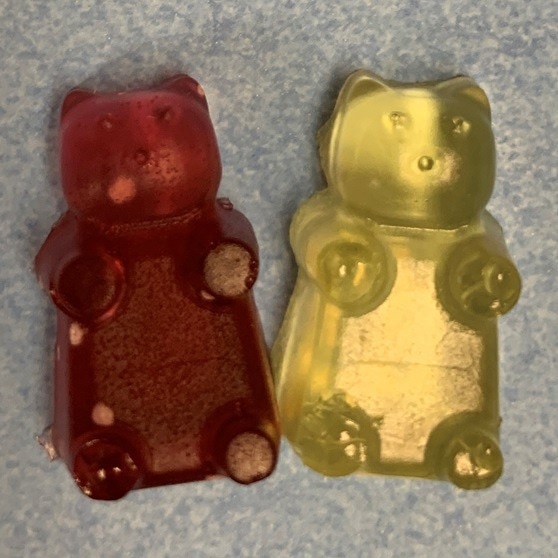One type of renewable energy that is gaining popularity is wind power. However, disposal is a problem when it is time to swap out the massive turbine blades that turn wind energy into power.
 A composite resin suitable for making wind turbine blades could be recycled into a variety of products, including these gummy bears. Image Credit: John Dorgan.
A composite resin suitable for making wind turbine blades could be recycled into a variety of products, including these gummy bears. Image Credit: John Dorgan.
A novel composite resin has been developed by scientists that can be used to create these enormous structures. The composite can then be recycled to create fresh turbine blades as well as other structures like countertops, automobile taillights, diapers, and even gummy bears.
The researchers report their findings at the American Chemical Society’s (ACS) fall meeting. ACS Fall 2022 is a hybrid conference that will be held online and in person from August 21 to 25, with on-demand access available from August 26 to September 9. Nearly 11,000 talks covering a wide range of science issues are included in the meeting.
The beauty of our resin system is that at the end of its use cycle, we can dissolve it, and that releases it from whatever matrix it’s in so that it can be used over and over again in an infinite loop. That’s the goal of the circular economy.
John Dorgan PhD, Michigan State University
John Dorgan is presenting the work at the meeting.
Wind turbine blades made of fiberglass can be as long as a football field. The majority of discarded blades wind up in landfills, despite the fact that certain businesses have discovered ways to convert fiberglass into lower-value components.
Larger wind turbine blades are more efficient, so companies keep making bigger and bigger ones. Often, wind farms will actually replace the turbine blades before the end of service life because the farms can generate more electricity with bigger blades.
John Dorgan PhD, Michigan State University
Glass fibers, a polymer generated from plants, and a synthetic polymer were combined to create a new turbine material by Dorgan and colleagues at Michigan State University. This thermoplastic resin produced panels that were sturdy and long-lasting enough to be employed in vehicles or wind turbines.
To recast the material into new items of the same type, the researchers manually took the glass fibers from the panels and dissolved them in a fresh monomer. The recast panels were significant in that they shared the same physical characteristics as the originals.
The innovative resin may find usage in a number of other applications outside new wind turbine blades. The researchers created cultured stone that could be used to make domestic items like counters and sinks by combining the resin with various minerals.
“We’ve recently made a bathroom sink with the cultured stone, so we know it works,” adds Dorgan.
To create products like laptop covers and power tools, injection molding can be utilized to crush the recovered material and combine it with additional plastic resins.
The material can also be upcycled into higher-value products. Digesting the thermoplastic resin in an alkaline solution generated poly(methyl methacrylate) (PMMA), a generally used acrylic material for windows, car taillights, and numerous other items.
PMMA was changed into poly(methacrylic acid), a super-absorbent polymer used in diapers, by increasing the digestion’s temperature. Potassium lactate, which can be purified and turned into candy and sports drinks, was also produced by alkaline digestion.
“We recovered food-grade potassium lactate and used it to make gummy bear candies, which I ate,” Dorgan adds.
The goal is to produce some reasonably sized blades for field testing now that the researchers have shown that the material has physical qualities suited for wind turbines.
The current limitation is that there’s not enough of the bioplastic that we’re using to satisfy this market, so there needs to be considerable production volume brought online if we’re going to actually start making wind turbines out of these materials.
John Dorgan PhD, Michigan State University
Dorgan notes, “A carbon atom derived from a plant, like corn or grass, is no different from a carbon atom that came from a fossil fuel. It’s all part of the global carbon cycle, and we’ve shown that we can go from biomass in the field to durable plastic materials and back to foodstuffs.”
The David L. and Denise M. Lamp Endowment provided funding, which the researchers acknowledge.